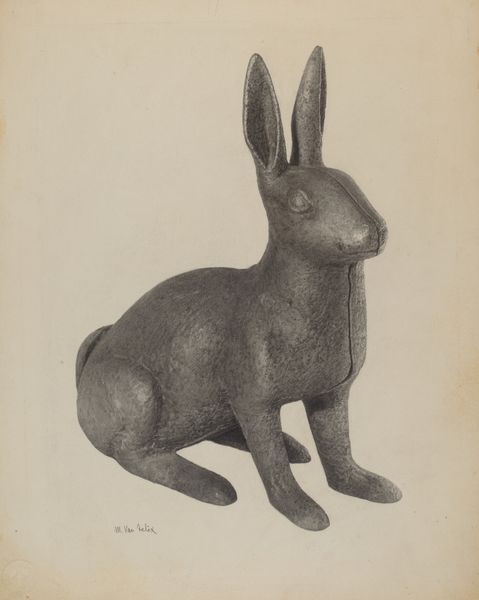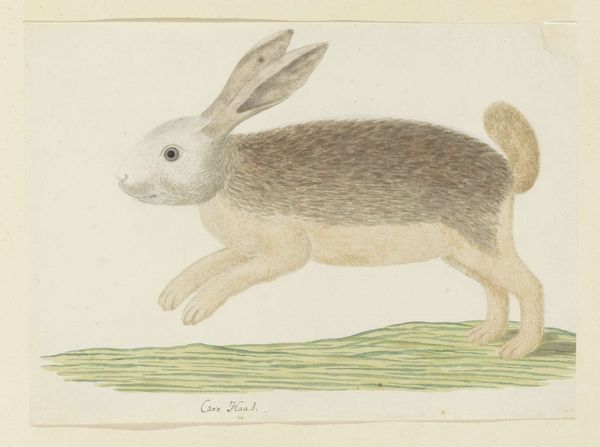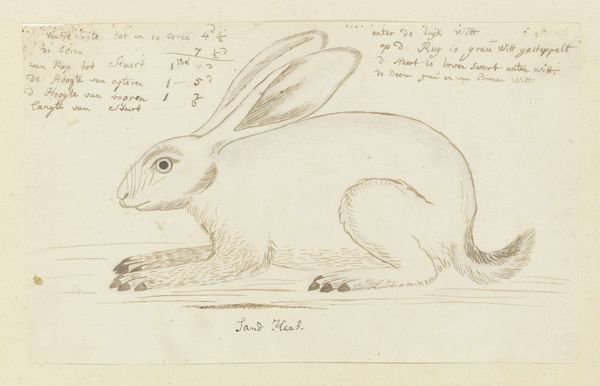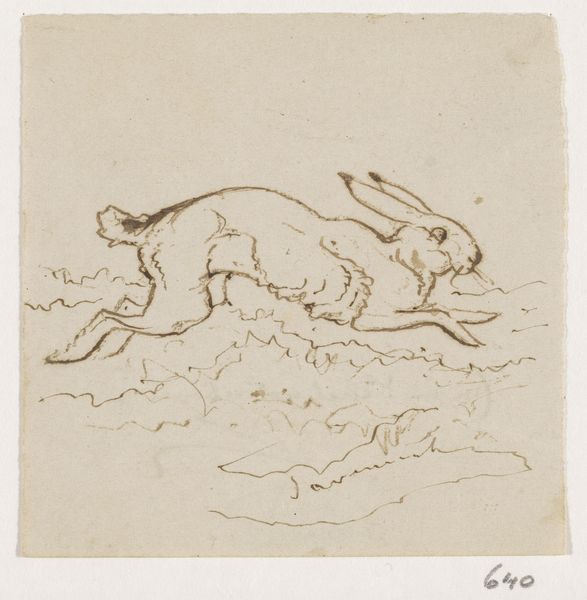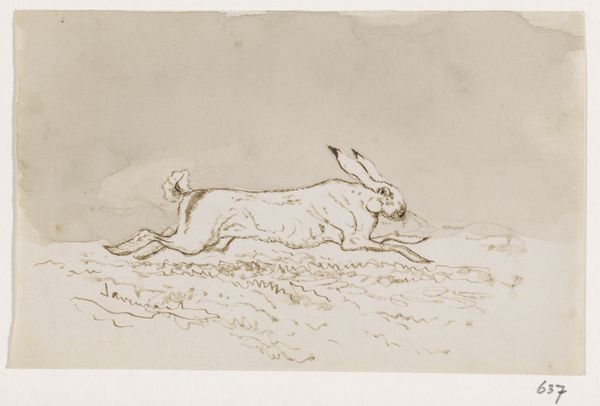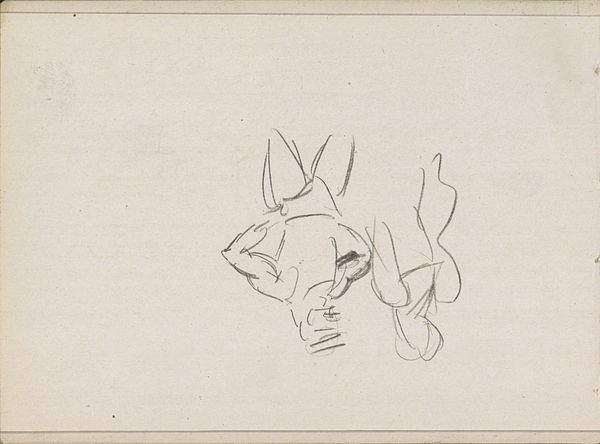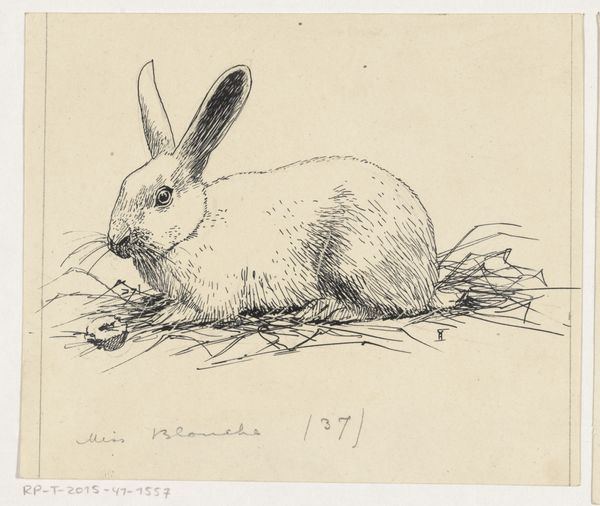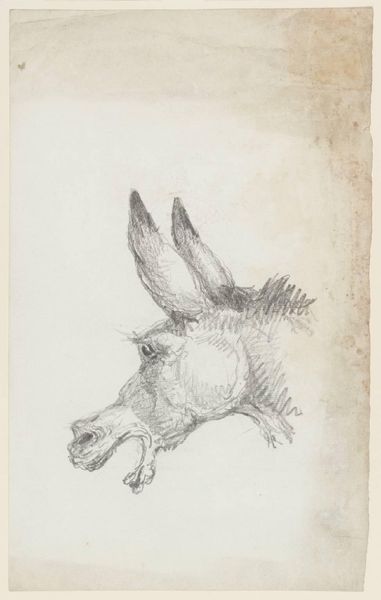
drawing, watercolor
#
drawing
#
figuration
#
watercolor
#
coloured pencil
#
watercolour illustration
#
watercolor
Dimensions: overall: 27 x 21.8 cm (10 5/8 x 8 9/16 in.) Original IAD Object: 12" high; 10 1/2" long; 5 1/4" wide
Copyright: National Gallery of Art: CC0 1.0
Curator: Rex F. Bush's watercolor drawing, simply titled "Rabbit," was completed circa 1936. What’s your initial read of this work? Editor: My first thought is… vulnerability. The delicate washes, the unassuming scale, it all speaks to a fragile existence. Are we looking at a victim here? Curator: The artist certainly leans into a limited palette. Notice the dominance of grey, sparingly offset by the muted blue speckling and the surprising pop of crimson for the eye. The composition is quite simple—an almost classical study of form and the use of light. The rabbit is placed centrally and is clearly the sole subject. Editor: Precisely. Placed so plainly. In this era, many animal depictions carry heavy political baggage – representing the downtrodden, the exploited. Consider how racial stereotypes have historically relied upon animal metaphors. Does this humble bunny figure enter those fraught conversations? Curator: Well, let’s examine the construction. Bush uses watercolor with precision. The layering creates depth. Note also the fine coloured pencil lines to sharpen the silhouette. The artist captures the animal’s posture, its physical being, economically yet effectively. The aesthetic interest, surely, resides primarily within this. Editor: But isn’t form always tied to content? Even if subconsciously, Bush chooses to portray the rabbit in this meek stance. And watercolor, historically seen as less ‘serious’ than oil, lends itself to an unpretentious interpretation. We are invited to consider what a rabbit signifies within a cultural context steeped in inequity. It might reflect on a pervasive sense of powerlessness experienced within communities whose narratives were so commonly marginalized. Curator: I will grant that social and political considerations cannot be entirely divorced from the act of artistic creation. The date is of note too: mid 1930s. But ultimately, the success of this piece relies upon its elegant composition, masterful handling of the watercolor medium, and acute understanding of shape and tone. Editor: So, for you, the elegance outweighs the possibility of social commentary? It’s interesting to acknowledge how our personal standpoints condition our reading of art’s inherent intentions or impacts. Curator: Perhaps, or perhaps, what appears elegantly simple often masks the profound effect of what is simply… beautiful.
Comments
No comments
Be the first to comment and join the conversation on the ultimate creative platform.
